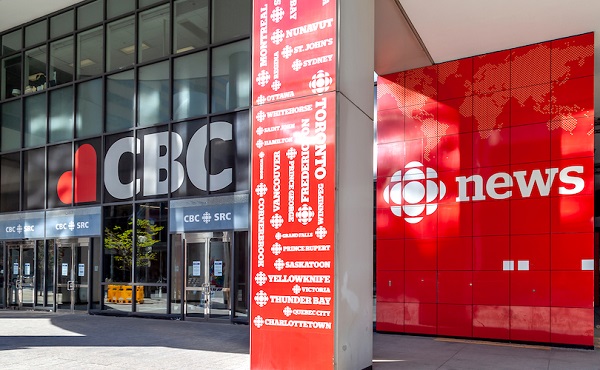Business
Navigating the country’s telecommunications landscape a tricky task: Peter Menzies

From the MacDonald Laurier Institute
By Peter Menzies
On the telecom side of things, the CRTC’s long-standing focus on the fundamental issues of access and affordability is far more tangible than the ethereal cultural ambitions that have swamped the broadcasting boat
Canada’s communications policy playing field is more uncertain today than it has been in decades.
The cause is primarily the Online Streaming Act (Bill C-11), which attempts to “modernize” the Broadcasting Act by defining all internet-based audio and visual content as “broadcasting.” Promoted by a series of heritage ministers as a simple matter of ensuring that streaming companies support Canadian content, the act has alarmed a thriving community of unregulated online creators while causing targeted offshore operators to question how they can continue operating in Canada.
Canadian Radio-television and Telecommunications Commission (CRTC) chair Vicky Eatrides, appointed last January, is clearly feeling pressure to implement Bill C-11 as quickly as possible. Following a series of rushed preliminary processes that made it challenging for many companies in the regulatory “rookie” category to participate, the CRTC’s first public hearing is scheduled for Nov. 20.
It involves 127 intervenors, is scheduled to last three weeks, and Eatrides hopes to have initial decisions made by the end of 2024.
With all her staff’s hands to the pumps on that file, Eatrides has shut down dealing with new licensing matters in the traditional broadcasting fields of television and radio for at least two years. All TV licences up for renewal this year were administratively renewed until 2025 (Bell has filed a court appeal). All of those expiring next year were renewed as is until 2026, and the radio industry was informed the CRTC won’t accept applications in that genre for at least two years, putting it in a regulatory cryo-chamber.
Meanwhile, active broadcasting files have been triaged to the extent that they are backed up, in some cases for years, leaving those involved without the decisions they need. The renewal of the CBC’s licence, for instance, remains incomplete 33 months after the CRTC’s public hearing into the matter.
On the telecommunications side, life is much more steady as she goes. Early in July, the CRTC laid out what it described as a more streamlined and flexible manner for determining wholesale access rates with the goal of fostering competition. But these matters are rarely dealt with swiftly, and incumbent companies affected by this new—and, to many, refreshing—approach have a long track record of being able to drag things out.
Competitor access rates is a matter that has preoccupied the CRTC for a decade; the rates have wavered back and forth since at least 2016, and the lack of regulatory certainty has had a debilitating impact on smaller service providers. The largest of those—TekSavvy—threw in the towel early this summer and put itself up for sale.
The management of so-called mobile virtual network operator rates, particularly relevant in the shadow of Quebecor’s purchase of Freedom Mobile, has moved along efficiently. This is another positive sign involving an area in which the CRTC is attempting to foster competition with increased regulatory certainty. When it comes to the telecom side of things, the regulator’s long-standing focus on the fundamental issues of access and affordability is, while complicated in terms of implementation, far more tangible than the ethereal cultural ambitions that have swamped the broadcasting boat.
Two other matters are worth watching.
The first—the CRTC’s role in overseeing negotiations as foreseen in the Online News Act—may evaporate. Meta has moved out of the business of carrying news in Canada, with disastrous consequences for those in the business of creating it. News Media Canada, the industry’s lobbying arm, is now asking the government to bow to Google’s demands before it does the same.
That could mean significant legislative amendments which could eliminate the CRTC’s role entirely. Seeing as the commission has already delayed decisions on which news organizations would qualify until late 2024, this would be a welcome relief.
The second will be whether the CRTC, when dealing with the likes of Disney and Netflix next month, realizes what’s at stake. The United States-based companies aren’t interested in contributing solely through official funds while all the commission appears to want to talk about is how much they should pay and to which funds.
Neither has threatened, as Meta and Google did with Bill C-18, to disconnect Canada if they don’t get the outcomes they need.
Not yet, anyway.
Peter Menzies is a senior fellow with the Macdonald-Laurier Institute, a former newspaper executive, and past vice-chair of the CRTC.
2025 Federal Election
Next federal government should end corporate welfare for forced EV transition

From the Fraser Institute
By Tegan Hill and Jake Fuss
Corporate welfare simply shifts jobs and investment away from other firms and industries—which are more productive, as they don’t require government funding to be economically viable—to the governments’ preferred industries and firms, circumventing the preferences of consumers and investors. And since politicians spend other people’s money, they have little incentive to be careful investors.
General Motors recently announced the temporary closure of its electric vehicle (EV) manufacturing plant in Ontario, laying off 500 people because its new EV isn’t selling. The plant will shut down for six months despite hundreds of millions in government subsides financed by taxpayers. This is just one more example of corporate welfare—when governments subsidize favoured industries and companies—and it’s time for the provinces and the next federal government to eliminate it.
Between the federal government and Ontario government, GM received about $500 million to help fund its EV transition. But this is just one example of corporate welfare in the auto sector. Stellantis and Volkswagen will receive about $28 billion in government subsidies while Honda is promised $5 billion.
More broadly, from 2007 to 2019, the last pre-COVID year of data, the federal government spent an estimated $84.6 billion (adjusted for inflation) on corporate welfare while provincial and local governments spent another $302.9 billion. And crucially, these numbers exclude other forms of government support such as loan guarantees, direct investments and regulatory privileges, so the actual cost of corporate welfare during this period was much higher.
Of course, politicians claim that corporate welfare benefits workers. Yet according to a significant body of research, corporate welfare fails to generate widespread economic benefit. Think of it this way—if the businesses that received subsidies were viable to begin with, they wouldn’t need government support. So unprofitable companies are kept in business through governments’ support, which can prevent resources, including investment and workers, from moving to profitable companies, hurting overall economic growth.
Put differently, rather than fuelling economic growth, corporate welfare simply shifts jobs and investment away from other firms and industries—which are more productive, as they don’t require government funding to be economically viable—to the governments’ preferred industries and firms, circumventing the preferences of consumers and investors. And since politicians spend other people’s money, they have little incentive to be careful investors.
Governments also must impose higher tax rates on everyone else to pay for corporate welfare. In turn, higher tax rates discourage entrepreneurship and business investment—again, which fuels economic growth. And the higher the tax rates, the more economic activity they discourage.
GM’s EV plant shut down once again proves that when governments try to engineer the economy with corporate welfare, workers will ultimately lose. It’s time for the provinces and the next federal government—whoever it may be—to finally put an end to this costly and ineffective policy approach.
Business
Hudson’s Bay Bid Raises Red Flags Over Foreign Influence

From the Frontier Centre for Public Policy
A billionaire’s retail ambition might also serve Beijing’s global influence strategy. Canada must look beyond the storefront
When B.C. billionaire Weihong Liu publicly declared interest in acquiring Hudson’s Bay stores, it wasn’t just a retail story—it was a signal flare in an era where foreign investment increasingly doubles as geopolitical strategy.
The Hudson’s Bay Company, founded in 1670, remains an enduring symbol of Canadian heritage. While its commercial relevance has waned in recent years, its brand is deeply etched into the national identity. That’s precisely why any potential acquisition, particularly by an investor with strong ties to the People’s Republic of China (PRC), deserves thoughtful, measured scrutiny.
Liu, a prominent figure in Vancouver’s Chinese-Canadian business community, announced her interest in acquiring several Hudson’s Bay stores on Chinese social media platform Xiaohongshu (RedNote), expressing a desire to “make the Bay great again.” Though revitalizing a Canadian retail icon may seem commendable, the timing and context of this bid suggest a broader strategic positioning—one that aligns with the People’s Republic of China’s increasingly nuanced approach to economic diplomacy, especially in countries like Canada that sit at the crossroads of American and Chinese spheres of influence.
This fits a familiar pattern. In recent years, we’ve seen examples of Chinese corporate involvement in Canadian cultural and commercial institutions, such as Huawei’s past sponsorship of Hockey Night in Canada. Even as national security concerns were raised by allies and intelligence agencies, Huawei’s logo remained a visible presence during one of the country’s most cherished broadcasts. These engagements, though often framed as commercially justified, serve another purpose: to normalize Chinese brand and state-linked presence within the fabric of Canadian identity and daily life.
What we may be witnessing is part of a broader PRC strategy to deepen economic and cultural ties with Canada at a time when U.S.-China relations remain strained. As American tariffs on Canadian goods—particularly in aluminum, lumber and dairy—have tested cross-border loyalties, Beijing has positioned itself as an alternative economic partner. Investments into cultural and heritage-linked assets like Hudson’s Bay could be seen as a symbolic extension of this effort to draw Canada further into its orbit of influence, subtly decoupling the country from the gravitational pull of its traditional allies.
From my perspective, as a professional with experience in threat finance, economic subversion and political leveraging, this does not necessarily imply nefarious intent in each case. However, it does demand a conscious awareness of how soft power is exercised through commercial influence, particularly by state-aligned actors. As I continue my research in international business law, I see how investment vehicles, trade deals and brand acquisitions can function as instruments of foreign policy—tools for shaping narratives, building alliances and shifting influence over time.
Canada must neither overreact nor overlook these developments. Open markets and cultural exchange are vital to our prosperity and pluralism. But so too is the responsibility to preserve our sovereignty—not only in the physical sense, but in the cultural and institutional dimensions that shape our national identity.
Strategic investment review processes, cultural asset protections and greater transparency around foreign corporate ownership can help strike this balance. We should be cautious not to allow historically Canadian institutions to become conduits, however unintentionally, for geopolitical leverage.
In a world where power is increasingly exercised through influence rather than force, safeguarding our heritage means understanding who is buying—and why.
Scott McGregor is the managing partner and CEO of Close Hold Intelligence Consulting.
-

 2025 Federal Election1 day ago
2025 Federal Election1 day agoOttawa Confirms China interfering with 2025 federal election: Beijing Seeks to Block Joe Tay’s Election
-

 2025 Federal Election1 day ago
2025 Federal Election1 day agoHow Canada’s Mainstream Media Lost the Public Trust
-

 2025 Federal Election23 hours ago
2025 Federal Election23 hours agoBREAKING: THE FEDERAL BRIEF THAT SHOULD SINK CARNEY
-

 2025 Federal Election1 day ago
2025 Federal Election1 day agoReal Homes vs. Modular Shoeboxes: The Housing Battle Between Poilievre and Carney
-

 2025 Federal Election1 day ago
2025 Federal Election1 day agoCHINESE ELECTION THREAT WARNING: Conservative Candidate Joe Tay Paused Public Campaign
-

 COVID-191 day ago
COVID-191 day agoNearly Half of “COVID-19 Deaths” Were Not Due to COVID-19 – Scientific Reports Journal
-

 Media22 hours ago
Media22 hours agoCBC retracts false claims about residential schools after accusing Rebel News of ‘misinformation’
-

 John Stossel1 day ago
John Stossel1 day agoClimate Change Myths Part 2: Wildfires, Drought, Rising Sea Level, and Coral Reefs







